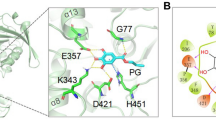Abstract
In the search for an efficient producer of tannase, Penicillium sp. EZ-ZH190 was subjected to mutagenesis using heat treatment and strain EZ-ZH290 was isolated. The maximum tannase in this mutant strain was 4.32 U/mL with an incubation period of 84 h as compared to wild strain EZ-ZH190 where the incubation period was 96 h with a maximum enzyme activity of 4.33 U/mL. Also, the Penicillium sp. EZ-ZH290 tannase had a maximum activity at 40 °C and pH 5.5. Then, the spores of strain EZ-ZH290 were subjected to γ irradiation mutagenesis and strain EZ-ZH390 was isolated. Strain EZ-ZH390 exhibited higher tannase activity (7.66 U/mL) than the parent strain EZ-ZH290. It was also found that Penicillium sp. EZ-ZH390 tannase had an optimum activity at 35 °C and a broad pH profile with an optimum at pH 5.5. The tannase pH stability of Penicillium sp. EZ-ZH390 and its maximum production of tannase followed the same trend for five generations confirming the occurrence of stable mutant. This paper is shown that γ irradiation can mutate the Penicillium sp. leading to increase the tannase production.






Similar content being viewed by others
References
Pepi, M., Lampariello, L. R., & Altieri, R. (2010). International Biodeterioration and Biodegradation, 64, 73–80. doi:10.1016/j.ibiod.2009.10.009.
Frutos, P., Hervas, G., Giraldez, F. J., & Mantec, A. R. (2004). Spanish Journal of Agricultural Research, 2, 191–202.
Bele, A. A., Jadhav, V. M., & Kadam, V. J. (2010). Asian Journal of Plant Sciences, 9, 209–214. doi:10.3923/ajps.2010.209.214.
Belmares, R., Contreras-Esquivel, J. C., Rodriguez-Herrera, R., Coronel, A. R., & Aguilar, C. N. (2004). LWT—Food Science and Technology, 37, 857–864. doi:10.1016/j.lwt.2004.04.002.
Mingshu, L., Kai, Y., Qiang, H., & Dongying, J. (2006). Journal of Basic Microbiology, 46, 68–84. doi:10.1002/jobm.200510600.
Lekha, P. K., & Lonsane, B. K. (1997). Advances in Applied Microbiology, 44, 215–260. doi:10.1016/S0065-2164(08)70463-5.
Rodriguez, H., Curiel, J. A., Landete, J. M., et al. (2009). International Journal of Food Microbiology, 132, 79–90. doi:10.1016/j.ijfoodmicro.2009.03.025.
Ramirez, L., Arrizon, J., Sandoval, G., et al. (2008). Applied Biochemistry and Biotechnology, 151, 711–723. doi:10.1007/s12010-008-8319-8.
Rodriguez-Duran, L. V., Valdivia-Urdiales, B., Contreras-Esquivel, J. C., Rodriguez-Herrera, R., & Aguilar, C. N. (2011). Enzyme Research, 1–20, doi: 10.4061/2011/823619 .
Aguilar, C. N., Rodriguez, R., Gutierrez-Sanchez, G., et al. (2007). Applied Microbiology and Biotechnology, 76, 47–59. doi:10.1007/s00253-007-1000-2.
Aguilar, C. N., & Gutierrez-Sanchez, G. (2001). Food Science and Technology International, 7, 373–382. doi:10.1106/69M3-B30K-CF7Q-RJ5G.
Belur, P. D., & Mugeraya, G. (2011). Research Journal of Microbiology, 6, 25–40.
Cruz-Hernandez, M., Contreras-Esquivel, J. C., Lara, F., Rodriguez, R., & Aguilar, C. N. (2005). Section C, Journal of Biosciences (Zeitschrift fur Naturforschung), 60, 844–848.
Mahapatra, S., & Banerjee, D. (2009). Hyalopus sp. Journal of General and Applied Microbiology, 55, 255–259.
Chhokar, V., Seema, V., & Beniwal, V. (2010). Biotechnology and Bioprocess Engineering, 15, 793–799. doi:10.1007/s12257-010-0058-3.
Belur, P. D., Gopal, M., Nirmala, K. R., & Basavaraj, N. (2010). Journal of Microbiology and Biotechnology, 20, 732–736.
Purohit, J. S., Dutta, J. R., Nanda, R. K., & Banerjee, R. (2006). Bioresource Technology, 97, 795–801. doi:10.1016/j.biortech.2005.04.031.
Raaman, N., Mahendran, B., Jaganathan, C., Sukumar, S., & Chandrasekaran, V. (2010). World Journal of Microbiology and Biotechnology, 26, 1033–1039. doi:10.1007/s11274-009-0266-1.
Gupta, R., Bradoo, S., & Saxena, R. K. (1997). Letters in Applied Microbiology, 24, 253–255. doi:10.1046/j.1472-765X.1997.00054.x.
Curiel, J. A., Rodriguez, H., Acebron, I., Mancheno, J. M., de Blanca Rivas, L., & Munoz, R. (2009). Journal of Agricultural and Food Chemistry, 57, 6224–6230. doi:10.1021/jf901045s.
Murugan, K., Saravanababu, S., & Arunachalam, M. (2007). Bioresource Technology, 98, 946–949. doi:10.1016/j.biortech.2006.04.031.
Tuite, j. (1969). Plant pathological methods fungi and bacteria (pp.229). U.S.A: Burgess publishing company.
Rout, S., & Banerjee, R. (2006). Indian Journal of Biotechnology, 5, 346–350.
Ibuchi, S., Minoda, Y., & Yamada, K. (1967). Agricultural and Biological Chemistry, 31, 513–518.
Sharma, S., Agarwal, L., & Saxena, R. K. (2008). Bioresource Technology, 99, 2544–2551. doi:10.1016/j.biortech.2007.04.035.
Davidson, J., & Schiestl, R. (2000). Cancer Cell Biology. 665 Huntington Avenue, Boston, MA 02115, USA: Harvard School Public Health.
Sharma, S., Bhat, T. K., & Dawra, R. K. (1999). World Journal of Microbiology and Biotechnology, 15, 673–677. doi:10.1023/A:1008939816281.
Mondal, K. C., Banerjee, D., Banerjee, R., & Pati, B. R. (2001). Journal of General and Applied Microbiology, 47, 263–267. doi:10.2323/jgam.47.263.
Kasieczka-Burnecka, M., Kuc, K., Kalinowska, H., Knap, M., & Turkiewicz, M. (2007). Applied Microbiology and Biotechnology, 77, 77–89. doi:10.1007/s00253-007-1124-4.
Ramirez-Coronel, M. A., Viniegra-Gonzalez, G., Darvill, A., & Augur, C. (2003). Microbiology, 149, 2941–2946. doi:10.1099/mic.0.26346-0.
BeeNa, P. S., Soorej, M. B., Elyas, K. K., Sarita, G. B., & Chandrasekaran, M. (2010). Journal of Microbiology and Biotechnology, 20, 1403–1414. doi:10.4014/jmb.1004.04038.
Iwamoto, K., Tsuruta, H., Nishitaini, Y., & Osawa, R. (2008). Systematic and Applied Microbiology, 31, 269–277. doi:10.1016/j.syapm.2008.05.004.
Barthomeuf, C., Regerat, F., & Pourrat, H. (1994). Journal of Fermentation and Bioengineering, 77, 320–323. doi:10.1016/0922-338X(94)90242-9.
Yamada, H., Adachi, O., Watanabe, M., & Sato, N. (1968). Agricultural and Biological Chemistry, 32, 1070–1078.
Abdel-Naby, M. A., Sherif, A. A., El-Tanash, A. B., & Mankarios, A. T. (1999). Journal of Applied Microbiology, 87, 108–114. doi:10.1046/j.1365-2672.1999.00799.x.
Dixon, M., & Webb, E. C. (1966). Enzymes. London: Longman Green & Co.
Zhong, X., Peng, L., Zheng, S., et al. (2004). Protein Expression and Purification, 36, 165–169. doi:10.1016/j.pep.2004.04.016.
Acknowledgments
The authors would like to thank Tarbiat Modares University of Iran for financial support.
Author information
Authors and Affiliations
Corresponding author
Rights and permissions
About this article
Cite this article
Zakipour-Molkabadi, E., Hamidi-Esfahani, Z., Sahari, M.A. et al. Improvement of Strain Penicillium sp. EZ-ZH190 for Tannase Production by Induced Mutation. Appl Biochem Biotechnol 171, 1376–1389 (2013). https://doi.org/10.1007/s12010-013-0436-3
Received:
Accepted:
Published:
Issue Date:
DOI: https://doi.org/10.1007/s12010-013-0436-3




